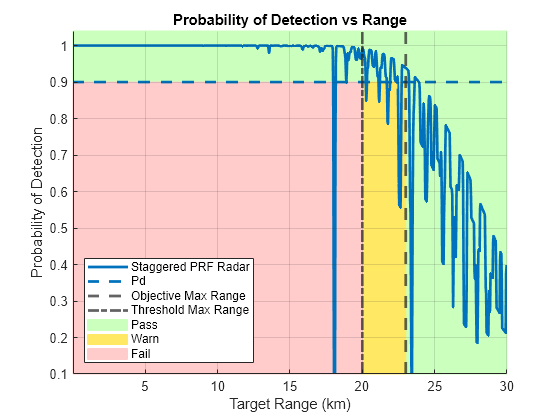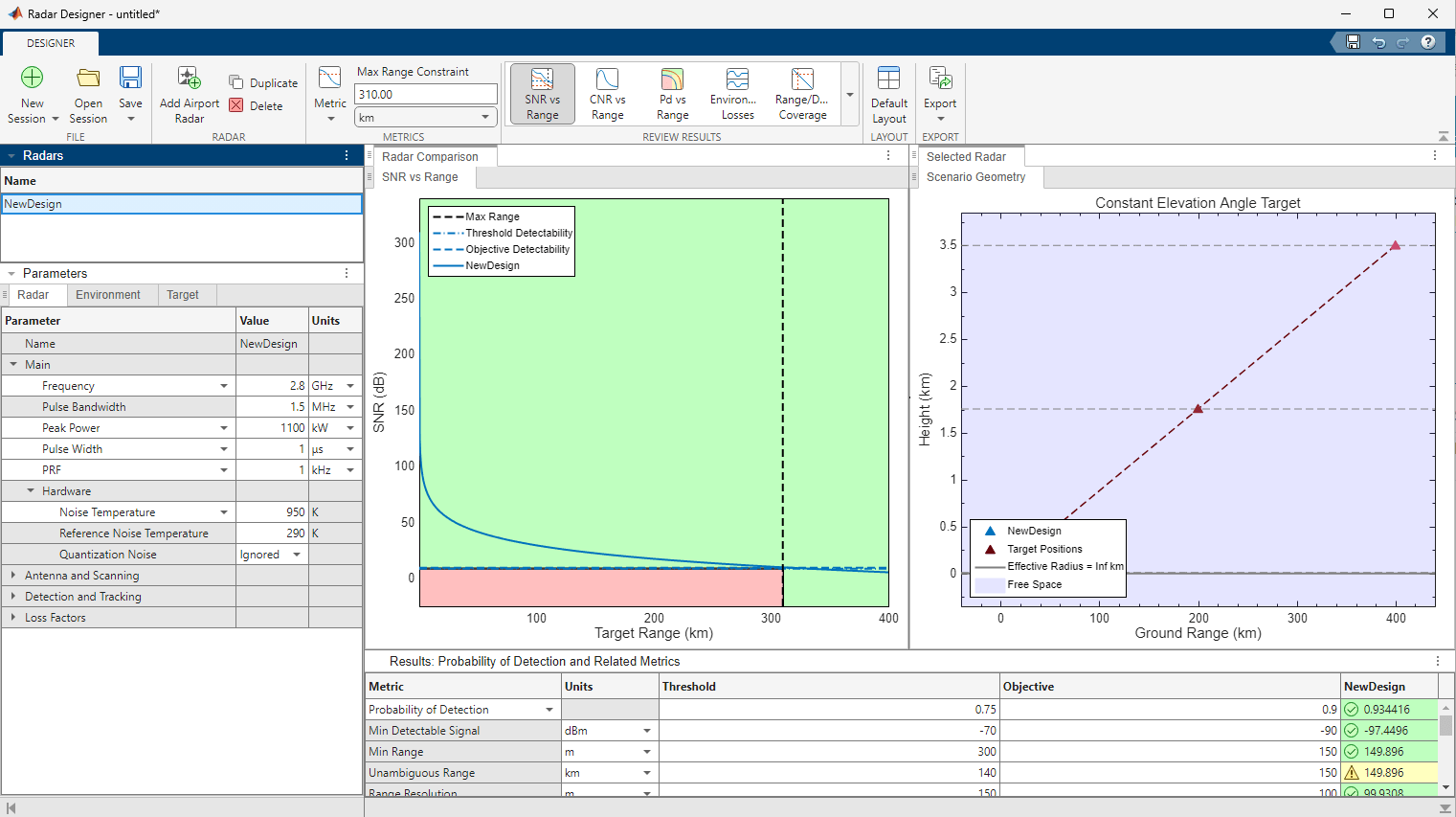Radar Systems Engineering
The functions in this section give you the tools needed to evaluate the performance of a radar system. You can use the radar equation to evaluate the radar received signal-to-noise ratio as a function of transmitted power. The toolbox lets you determine the minimal detectable signal and the accuracy of measurable target properties such as position and velocity. The radar equation lets you determine important radar metrics such as the receiver operating characteristic. The toolbox also lets you measure the performance of search-and-track radar systems as well as synthetic aperture radars. You can also account for radar losses due to environmental factors such as weather and clutter. Tools such as the Radar Designer help you perform link-budget analyses.
Categories
- Radar Equations
Radar equations for searching and tracking, synthetic aperture radar (SAR) form of the radar equation, signal-to-noise ratio versus range plot, probability of detection versus range plot
- Detection and Tracking Statistics
Detectability factor, receiver operating characteristics (ROC), tracker operating characteristics (TOC), range-angle-height (Blake) chart
- Antenna and Receiver Gains and Losses
Beam and scanning loss, beam-dwell factor, eclipsing loss, noise figure, matching loss, pulse integration loss, CFAR loss, MTI loss
- Environment and Clutter
Radar propagation, land and sea clutter, atmospheric models, attenuation due to gas, fog, rain and snow
- Synthetic Aperture Radar
Antenna footprint and resolution, range and cross-range ambiguities, SAR image distortions, SAR image SNR, noise equivalent reflectivity, rain clutter



